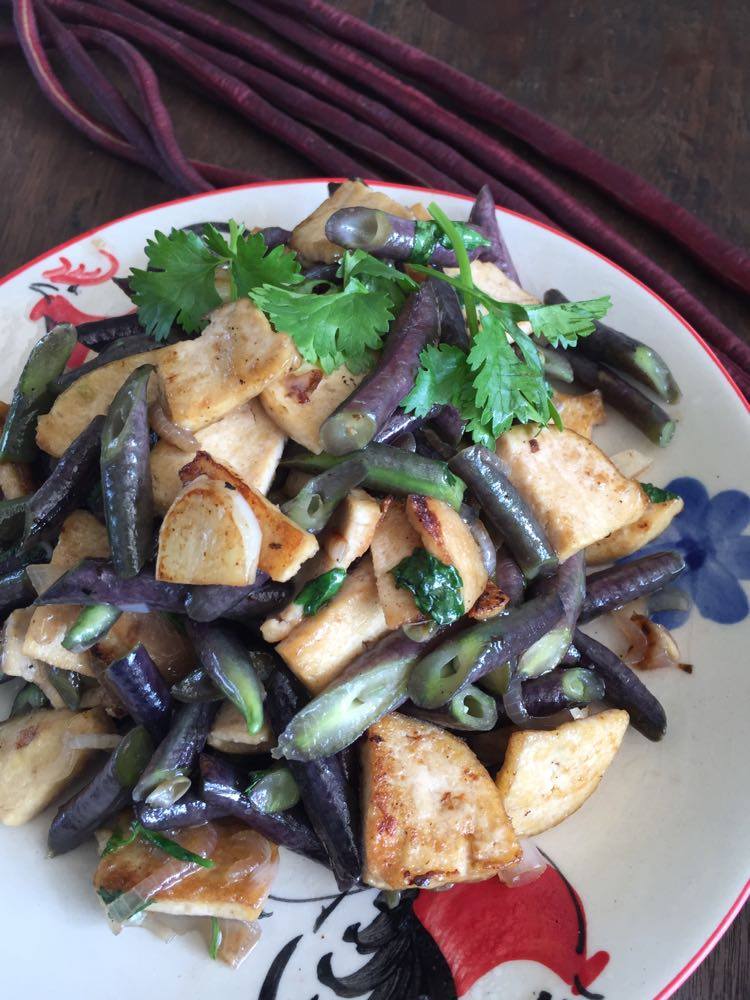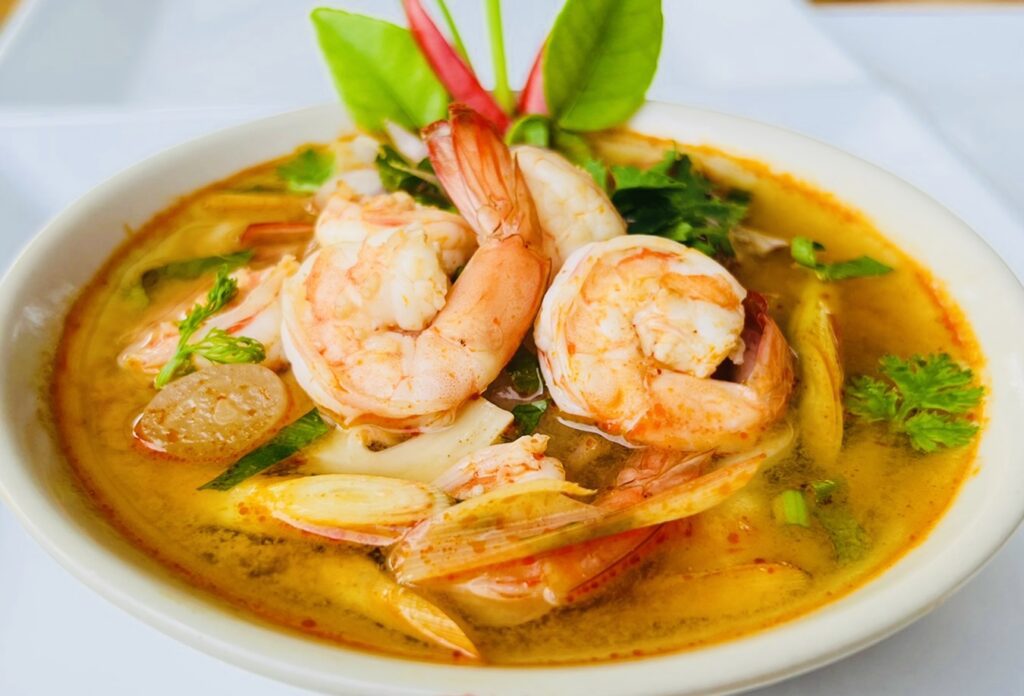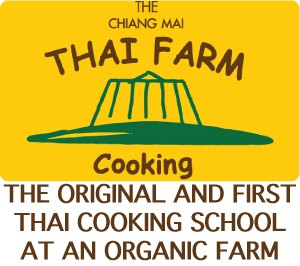
When people think of Thai food, the mind often drifts to images of vibrant curries, spicy soups, aromatic herbs, and colorful street markets bustling with sizzling woks. Thailand’s cuisine is a rich tapestry of flavors — spicy, sour, sweet, salty, and bitter — all perfectly balanced in a way that few other cuisines manage to achieve.
But Thai food is much more than just taste. It’s a reflection of a deeply rooted culture, of traditions passed down over generations, and of a nation that treats its cuisine as a vital part of its identity.
A Harmony of Flavors
Thai cuisine is globally celebrated for its flavor balance. Each dish is crafted to excite multiple parts of the palate. Take the famous Tom Yum Goong, a spicy and sour shrimp soup. It combines lemongrass, kaffir lime leaves, galangal, fish sauce, chili, and lime juice — each ingredient chosen with intention, creating a dish that’s aromatic, zesty, and delightfully bold.

Another iconic dish, Pad Thai, represents Thai street food at its finest. Though simple in appearance, this stir-fried noodle dish blends tamarind paste, palm sugar, fish sauce, crushed peanuts, and chili flakes in a flavor profile that dances between sweet, salty, tangy, and spicy.
It’s this layering and balancing of flavors that make Thai food not only delicious but unforgettable.
The Importance of Fresh Ingredients
One of the secrets to Thai food’s brilliance lies in its ingredients. Fresh herbs like Thai basil, coriander, and mint are used generously. Coconut milk brings creaminess to curries, while garlic, shallots, and fresh chilies add heat and depth.
In Thai kitchens, ingredients are rarely substituted. Authenticity is key, and the local markets play a central role. Whether it’s sourcing the perfect green papaya for Som Tum salad or freshly pounded curry paste for Gaeng Keow Wan (green curry), the emphasis is always on quality and freshness.
This reliance on freshness is one reason why many travelers who fall in love with Thai cuisine find themselves enrolling in a thai cooking school. Learning how to make curry paste from scratch or master the perfect balance of spices is a rewarding cultural experience in itself.
A Cuisine Rooted in Culture
Thai food isn’t just about nourishment — it’s about connection. Meals are traditionally shared, and dishes are served family-style. This encourages conversation and bonding, making the dining table a place of warmth and unity.
Thai food is also heavily regional. In the north, dishes like Khao Soi (a coconut curry noodle soup) dominate, while the northeastern region (Isaan) favors grilled meats, sticky rice, and fiery salads. Central Thailand is home to many dishes tourists are familiar with, and the south brings richness and spice with dishes like Massaman Curry and Gaeng Som.
The cultural aspect of Thai food extends to its presentation. Garnishes are intricately carved, dishes are served on banana leaves, and attention is paid to color and texture. It’s as much about pleasing the eyes as it is the taste buds.
Thai Street Food: An Experience of Its Own
You can’t talk about Thai food without mentioning its street food culture. Bangkok, in particular, is considered one of the world’s street food capitals. Here, food vendors line the roadsides, selling everything from skewers of grilled meat to bowls of boat noodles and mango sticky rice.
The affordability and accessibility of street food mean that locals and tourists alike dine on these delicacies daily. For many visitors, tasting grilled chicken with spicy papaya salad from a humble street stall is more memorable than any five-star meal.
Street food is also where you see Thai culinary creativity on full display. Ingredients are adapted based on what’s available, and flavors evolve to meet the ever-changing appetites of hungry city-goers. It’s fast, flavorful, and always full of surprises.
Why Thai Food Captivates the World
Thai food has made a significant global impact. Thai restaurants can be found in nearly every major city worldwide, and Thai ingredients have become staples in many international grocery stores.
This popularity stems not only from the deliciousness of the food but also its healthiness and diversity. Thai dishes often feature vegetables, lean meats, and fresh herbs. There are plenty of vegetarian and vegan-friendly options, and many recipes are naturally gluten-free.
The cuisine’s emphasis on natural ingredients and holistic balance also aligns with the growing global trend toward wellness and conscious eating.
Learn the Craft: Enroll in a Thai Cooking School
For those who want to take their appreciation a step further, attending a thai cooking school is an excellent way to dive into the cuisine. These schools, found in cities like Chiang Mai, Bangkok, and even smaller rural towns, offer immersive classes that teach you how to source ingredients, prepare traditional dishes, and understand the philosophy behind each recipe.
You’ll not only learn to cook Thai food — you’ll experience it. From shopping in local markets to using age-old tools like stone mortars, the experience is both hands-on and enriching.
Some schools even take students into organic farms or local homes, giving an even deeper look into Thai culinary life. Whether you’re a beginner or an experienced cook, these lessons are unforgettable — and you get to eat everything you make!
Thai food is more than just a cuisine. It’s an experience — a journey through a land of spice and flavor, of tradition and innovation. It offers something for every kind of palate, from the spice-lover to the comfort-food seeker, from the adventurous to the health-conscious.
Whether you’re exploring the street food stalls of Bangkok, enjoying a meal at a seaside restaurant in Phuket, or trying your hand at green curry in a thai cooking school, one thing is certain: Thai food will leave a lasting impression on your taste buds and your heart.
So next time you sit down with a steaming bowl of Pad See Ew or a plate of Moo Ping skewers, remember — you’re not just eating. You’re taking part in one of the world’s most beloved culinary traditions.

Pingback: acheter kamagra en ligne allemagne
Pingback: get enclomiphene australia to buy
Pingback: cheap androxal cheap from canada
Pingback: cheapest buy flexeril cyclobenzaprine generic south africa
Pingback: purchase dutasteride australia discount
Pingback: order gabapentin cheap online pharmacy
Pingback: lowest price fildena with no presriptoin
Pingback: online order itraconazole generic efficacy
Pingback: buy cheap staxyn generic pharmacy usa
Pingback: cheap avodart united kingdom
Pingback: buying rifaximin generic switzerland
Pingback: buying xifaxan uk delivery
Pingback: kamagra levné žádné rx požadovaná kanada